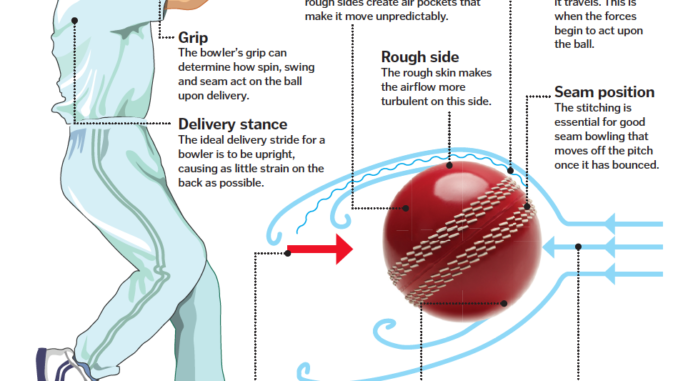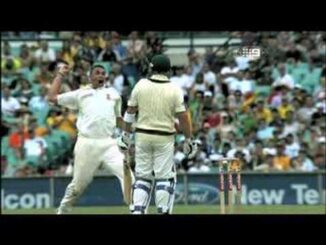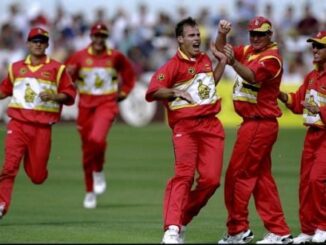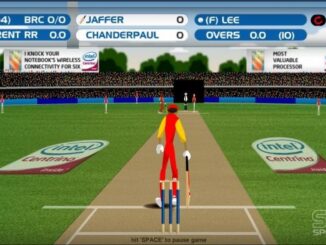
When a bowler runs in to bowl, he transfers his momentum due to running to the ball. Let us apply the law of conservation of momentum and Newtons laws of motion to the moving ball before and after it is bowled by the bowler.
Run Length Mechanics:
By the Law of conservation of momentum we write the equation describing the relation between mass of human, velocity of bowler, mass of the cricket ball, and velocity of the ball.
Mass of human * Velocity of stride = Mass of ball * Velocity of release… (1)
For a release velocity of 140 Km/ hr on the ball
Mass of ball = = 1.5 Kg
Mass of human = 70 Kg
Going by equation (1)
1.5 * 140 = 70 * V stride
V stride required of 70 kg human = 3 Km/hr
V stride required of 60 Kg human = 4 Km/hr
V stride required of 80 Kg human = 2.5 Km/hr.
If a bowler wears a 500 gm watch he needs to run slower to achieve the same release speed on the cricket ball as opposed to the case when he does not wear a watch. This is clear from the three equations above that a heavier human needs to run slower to the crease in order to impart the same velocity to the ball.
The run length is a critical factor because of the following reasons. The velocity of stride near the crease will depend upon the acceleration provided by the bowler and the length of his run up.
V * V = 2 * a * S (2) (Newton’s laws of motion)
For a 140 Km/hr release of the ball at a human stride of 3 km/hr or.88 m/s
(fastest human speed is about 10m/s)
0.88 * 0.88 = 2 * acceleration * 10 ( length of run)
Acceleration required = 0.032 m/sec * sec. If the length is shortened, the bowler has to provide more acceleration, that charge in more rapidly in order to achieve the same speed. If the run length is more then the bowler can progress slower to his run up.
Ball recoil:
The ball bounce is determined by the coefficient of restitution. A ball will be slowed down after pitching and also be slowed down in the air. A ball’s recoil is dependent upon the initial velocity and the coefficient of restitution. The release height of the ball is roughly 1.8 – 2.2 meters. At 140 km/hr vertical speed with a coefficient of restitution = 0.5 a ball would recoil up to half of its height. But the speed observed (140 Km/Hr) will not be released vertically.
For a release angle of 45 degrees with the vertical the vertical speed would be 140 * sin 45, the horizontal speed would be 140 * cos 45. This reduces the discharge speed or the horizontal speed to about 100 Km/hr.
For best utilization of the energy expended while running up it appears as though a perfect horizontal release where the angle of release is equal to 0 degrees would cause the discharge speed to be 140, all other release angles would dampen the release velocity on the ball. The recoil height or the height to which the ball bounces after pitching will not get affected by the angle of delivery of the ball. It depends only upon the height of delivery.
Mechanics of Short ball and good length ball:
Short ball and length ball depend upon the height from which the ball is delivered and the angle from which the ball is delivered. The speed at which the ball is thrown does not influence where the ball pitches. The mechanics of the ball will be influenced only because of the Earths gravitational force and no other forces. The location where the ball lands after leaving the bowlers hands will depend upon the horizontal component of the velocity of release.
Unless otherwise stated, PONIREVO and/or its licensors DO NOT own any intellectual property rights in the website and material on the website. Majority of the site’s content has been scraped and auto posted by a third party artificial intelligence program —– PONIREVO Creation Team.
Proudly WWW.PONIREVO.COM



